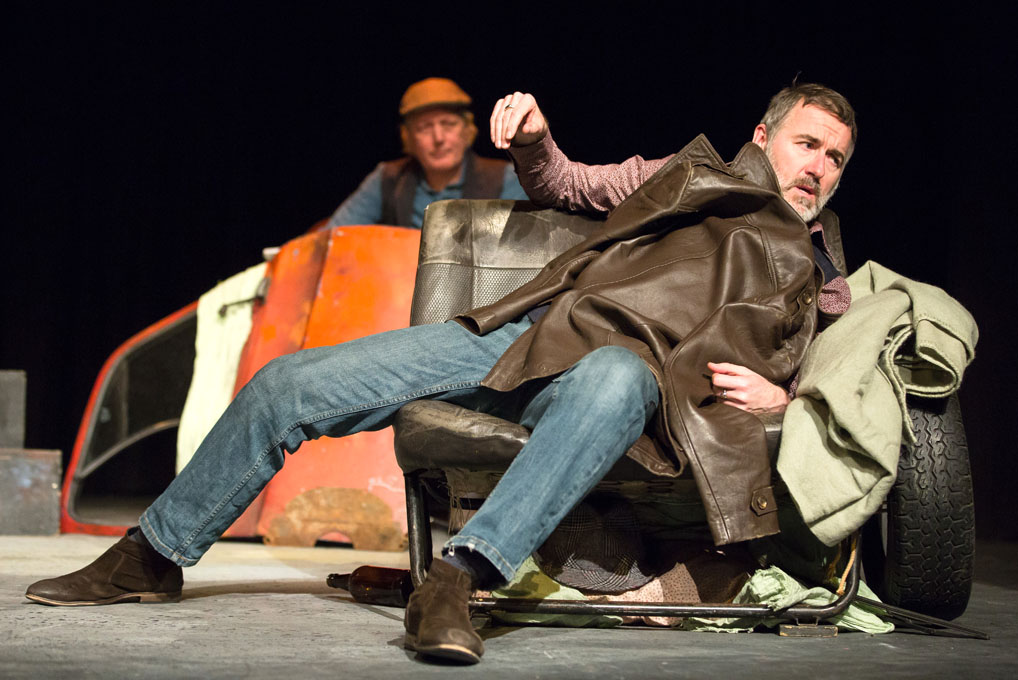
Travelling Light brings us theatre at its most raw, most basic, most creative. No smoke and mirrors, just light and music…and fine acting. It sucks the goodness out of story and myth, and reforms it in theatrical form. TÍr na n’Óg in Irish mythology is a kind of Never Never Land which exists in ancient mounds or under the sea, and in the play by Greg Banks, adapted from the film of the same name, is the name given to the horse which comes from the sea and follows the grandpa of Finn and Ally back to the outskirts of Dublin. The horse is immediately adopted by the two (settled) traveller children, who take it to live in their tower block home, to the chagrin of the other residents. Traveller ways are not settled-folk ways and the before you know it the two children are being chased on horseback, helter-skelter across Ireland into the West, pursued by the authorities.
The experience is like watching a chameleon Olympics where participants display the number of different disguises they can muster in a given time. It’s an individual as well as a team sport: ‘I can be a horse’, ‘I can be a horse in a lift’, ‘I can be a little girl’, ‘I can be a policeman’, ‘I’m a television’, ‘I can be a social worker’, ‘look at me, I’m a helicopter… now I’m a tree – an obstinate tree’, ‘I’m a police dog…. that talks’. ‘We can be the sea!’ Animal, vegetable or mineral, it’s all grist to the imaginative mill.
The supercharged acting whisks us along to the accompaniment of Thomas Johnson’s atmospheric score which sews the piece together; always there, never intrusive, like someone feeding you a drug which keeps you spellbound.
Nina Logue’s Ally has that singleness of purpose we see in the young. It is the driving force that resists authority and insists, ‘Yes we can’. Adam J Carpenter is her older, protective brother, Finn, who along with Pa/Grandpa knows the secret that haunts the family. Craig Edwards who reprises his role as the dog in Jane Eyre – this one in uniform – is the still mourning Pa. Amongst his many talents is the ability to change character completely and convincingly before the hat drops to the floor. For all three it is a tour de force of belief.
The show saves the emotional sucker punch until the end; a veil drops and, if we hadn’t already twigged, we see it has been about loss and imagination. ‘Why did mammy die when I was born?’ The white horse (as in Ibsen’s Rosmersholm) is a metaphor – the elixir of great art. (Could it have been anything else?)
Invention doesn’t get better than this. If you want to know how they achieve these remarkable effects (and more) the box office is a mere phone call away. ★★★★★ Graham Wyles 1st July 2016

